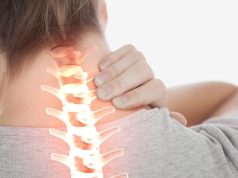If you’re dealing with ongoing pain from orthopedic issues, massage therapy alongside other approaches can be highly effective. It’s important to have massages for chronic pain done by a trained professional, as not all techniques are suitable for everyone. For more information, click here.
Nonetheless, with a knowledgeable healthcare provider skilled in orthopedic conditions, you can be guided to a safe and tailored massage therapy for your situation. Let’s explore how massage therapy helps manage persistent pain and what other treatments might complement it for optimal relief:
Improved Blood Flow and Pain Reduction
Massage therapy can enhance blood flow to specific regions, fueling the area with oxygen and nutrients. This not only speeds up healing but can also diminish orthopedic-related discomfort. The therapy encourages the release of endorphins, our body’s natural painkillers, and relaxes muscles, often addressing the underlying cause of the chronic pain.
Tackling Inflammation
Inflammation can restrict movement and often leads to ongoing pain. Thankfully, various massage techniques, such as lymphatic drainage or myofascial release, are designed to cut down inflammation, boost mobility, and ease pain. Your healthcare provider will suggest the best massage treatments for your individual needs.
Enhancing Flexibility and Range of Motion
Orthopedic issues frequently limit how much we can move and stretch, potentially making pain worse. Massage therapy, with techniques like stretching and joint mobilization, can help increase flexibility and movement, often resulting in lowered pain and better overall functionality.
Stress Management and Mental Relaxation
Chronic pain often comes hand in hand with elevated stress, which can dampen one’s mood and mental state. Massage therapy helps trigger relaxation and curtail stress by engaging the body’s calming responses. In doing so, it tackles the emotional side of chronic pain, enhancing life quality. Recognizing the power of the mind in the pain management journey is key to a successful recovery.
Complementary Massage Therapy
Often used in conjunction with other treatments such as physical therapy, medication, or surgery, massage therapy can contribute to a well-rounded strategy for managing chronic pain over time.
For some people, massage therapy alone can make a big difference in their fight against chronic pain. It’s best to consult with a healthcare provider or a licensed massage therapist to determine if massage therapy suits you or if it should be part of a broader treatment plan.
































